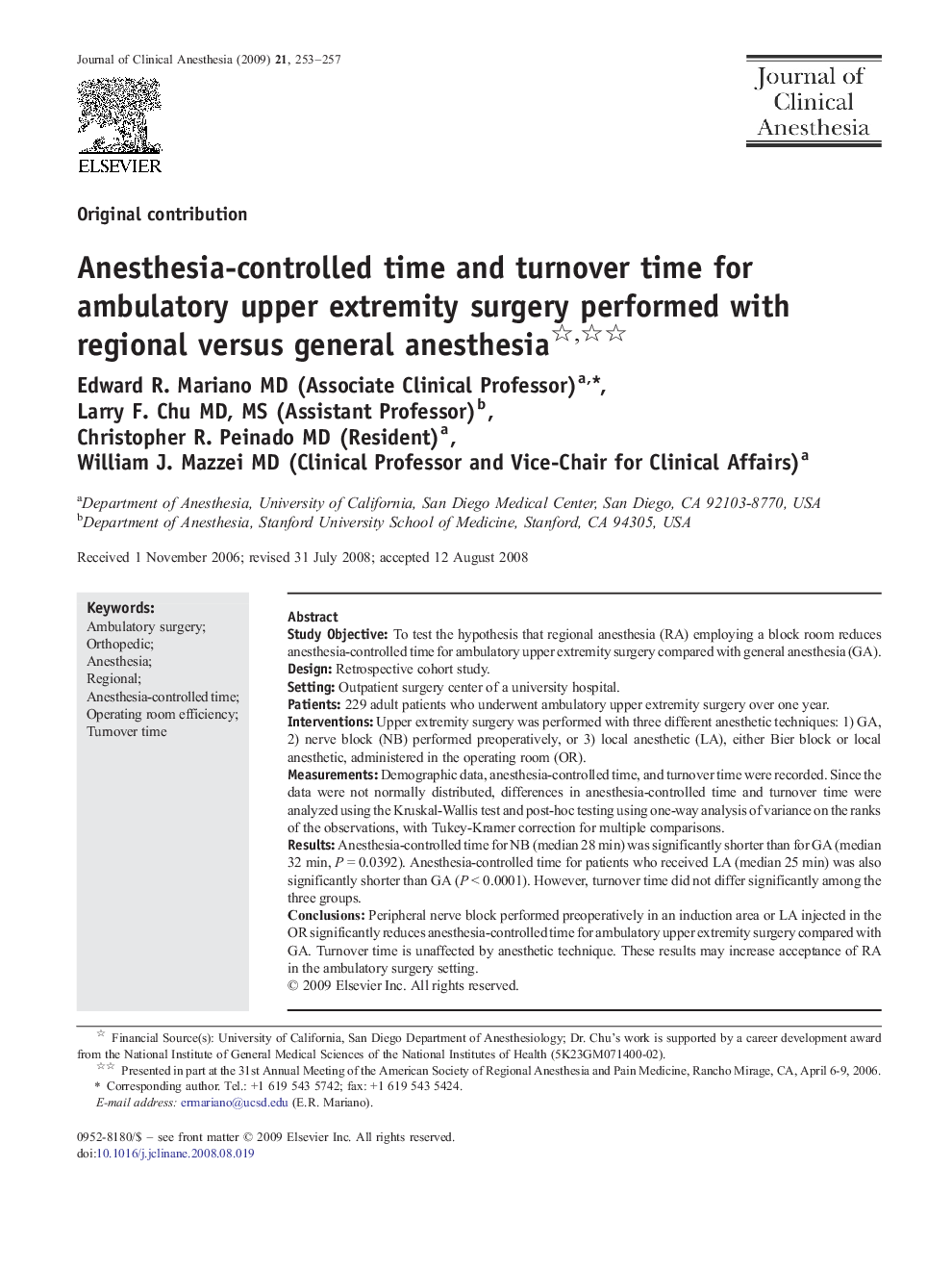| Article ID | Journal | Published Year | Pages | File Type |
|---|---|---|---|---|
| 2763945 | Journal of Clinical Anesthesia | 2009 | 5 Pages |
Study ObjectiveTo test the hypothesis that regional anesthesia (RA) employing a block room reduces anesthesia-controlled time for ambulatory upper extremity surgery compared with general anesthesia (GA).DesignRetrospective cohort study.SettingOutpatient surgery center of a university hospital.Patients229 adult patients who underwent ambulatory upper extremity surgery over one year.InterventionsUpper extremity surgery was performed with three different anesthetic techniques: 1) GA, 2) nerve block (NB) performed preoperatively, or 3) local anesthetic (LA), either Bier block or local anesthetic, administered in the operating room (OR).MeasurementsDemographic data, anesthesia-controlled time, and turnover time were recorded. Since the data were not normally distributed, differences in anesthesia-controlled time and turnover time were analyzed using the Kruskal-Wallis test and post-hoc testing using one-way analysis of variance on the ranks of the observations, with Tukey-Kramer correction for multiple comparisons.ResultsAnesthesia-controlled time for NB (median 28 min) was significantly shorter than for GA (median 32 min, P = 0.0392). Anesthesia-controlled time for patients who received LA (median 25 min) was also significantly shorter than GA (P < 0.0001). However, turnover time did not differ significantly among the three groups.ConclusionsPeripheral nerve block performed preoperatively in an induction area or LA injected in the OR significantly reduces anesthesia-controlled time for ambulatory upper extremity surgery compared with GA. Turnover time is unaffected by anesthetic technique. These results may increase acceptance of RA in the ambulatory surgery setting.
